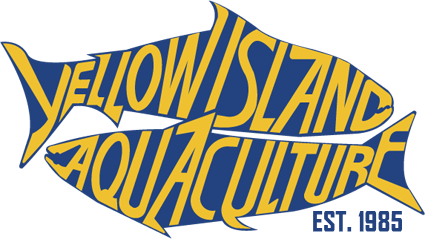

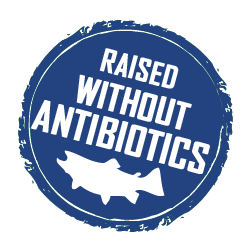
For 25 years Yellow Island salmon have been never fed hormones, antibiotics, chemotherapeutants or growth enhancers. We have been selecting fish with naturally robust immune systems resistant to the local environmental pathogens.
Antibiotics and animal husbandry are also powerful tools which have been in use for many years both to promote animal welfare and to ensure a reliable food supply for increasing populations. However most people are aware that antibiotics can be and are misused in animal husbandry in a manner similar to which they are not infrequently misused in human health care. People worry that excessive use of antibiotics in aquaculture will result in contamination of their food chain with antibiotics. Indeed traces of antibiotics have been found with a fairly high level of frequency in shellfish from certain jurisdictions. In a report from Consumers Reports (August 2015, page 9) in the developed world this is less of a problem because of restrictions on antibiotics in animal husbandry and also because of testing on a regular basis of the food chain.
However the extensive use of antibiotics in animal husbandry has other problems. The best known of these is the development of antimicrobial resistance. There are well documented cases of highly resistant microbes coming out of animal husbandry operations as a result of ongoing use of so-called growth enhancing or preventive doses of antimicrobial agents.
A second problem is that these agents when used in large quantities over time tend to significantly alter the microbiota of the target organism and coincidentally alter the microbiota of organisms in the surrounding environment. This can result in organisms dependent on the agent which harbor resistant bacteria and subsequently suffer adverse health effects when the antimicrobial agent is not available. A further issue is that the wide dissemination of these products means that inevitably some of them will find their way into the environment and will affect the endemic microbiological composition of the entire ecological system. Some dramatic examples of this have recently surfaced from microbiological testing of waste effluent in China which has shown not only the presence of several different types of antibiotics but also has shown the persistence of highly resistant bacteria throughout the biological
purification systems.
Another related issue is that exposure to trace amounts of these agents either by workers during all stages of the production and distribution process and by other bystanders through the leakage of small amounts of these agents into the environment can result in the development of allergic reactions to them and the antibiotic then becomes unavailable for treatment of human disease. Further there will be no medical record of exposure to the particular antibiotics and some of the reactions can be unpredictable and unanticipated and can lead to serious consequences.
Because all of these reasons Yellow Island Aquaculture does not use antibiotics at any stage in the treatment of our animals and we do not have them on site. We do have availability through a veterinarian who is on call and can diagnose and provide antibiotics in the event of an outbreak which would threaten the welfare of the animals. If such an event were to occur we would then be obliged to withdraw any stock within a 10 m radius of the treated group from the organic stream. We believe that this is the only proper course for fully organic facility.
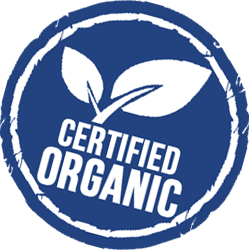
Yellow Island uses only Certified Organic feed from sustainable sources. Our natural long growth cycles mimic the natural life cycle of Chinook salmon in the wild.
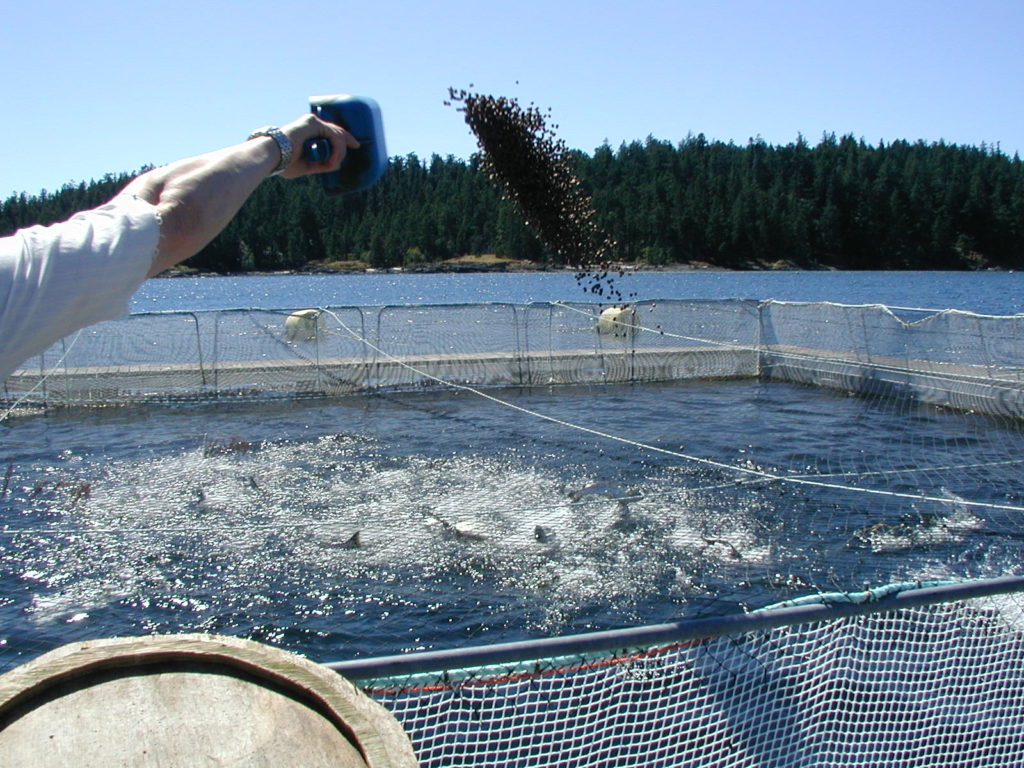 Fish are fed using individual automatic homemade feeders which are installed at each pen and the feeding process is supervised by staff on a continuous basis. Hand feeding is used to supplement the feeders to assess the animal’s response to the feed ration. Our fish are fed a commercially produced Organically Certified fish feed made from sustainable fisheries and byproducts of fish processing. There is organic vegetable matter added to the feed in small quantities to improve palatability, floating and to minimize the total amount of marine fish and oils that are used in the feed. Yellow Island Aquaculture uses only naturally sourced organic pigments obtained from either Pffaffia yeast or Hematococcus algae and does not use either chemical carotenoids or dyes in any of its products.
Fish are fed using individual automatic homemade feeders which are installed at each pen and the feeding process is supervised by staff on a continuous basis. Hand feeding is used to supplement the feeders to assess the animal’s response to the feed ration. Our fish are fed a commercially produced Organically Certified fish feed made from sustainable fisheries and byproducts of fish processing. There is organic vegetable matter added to the feed in small quantities to improve palatability, floating and to minimize the total amount of marine fish and oils that are used in the feed. Yellow Island Aquaculture uses only naturally sourced organic pigments obtained from either Pffaffia yeast or Hematococcus algae and does not use either chemical carotenoids or dyes in any of its products.
Conversion ratios of slightly under 2:1 are consistent at our site. This is slightly higher than the industry average which reflects the effects of our organic program processes in the rearing. Losses tend to be slightly higher as a result of no use of antibiotics and the growth processes are somewhat slower as no feed additives or stimulants are included in the ration. Yellow Island follows a grow out strategy of a total of four years including half a year in freshwater and 3 1/2 years and saltwater to achieve an approximate 8 to 10 pound fish. This is the pattern that is observed in the wild. It is possible to feed the animals much more aggressively and shorten the growth cycle by approximately a year but experience at Yellow Island suggests that this does not result in optimal flesh quality as it is not mimicking the natural state of the animals.
We also limit the density in the pens to a maximum of 5 kg/m³ versus more than 10 times this number for some large production facilities as this more accurately reflects the growth patterns of Chinook salmon in the wild and provides for better flesh quality.
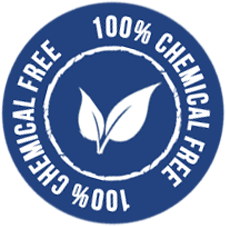
No chemical carotenoids/dyes or colorants are used on our farm. Organically sourced carotenoid pigments are fed from the time of salt water entry throughout the life of our fish.
Work at Yellow Island has clearly indicated that the antioxidant effects obtained from the carotenoids is an important part of the animal’s non-specific immune response. In organic rearing antibiotics are absolutely prohibited and the fish cannot afford to sacrifice the natural antioxidant effects from carotenoids at any stage of their lifecycle. Accordingly Yellow Island feeds the naturally sourced carotenoids from organically derived Pffaffia yeast or Hematococcus algae to the fish from the time they come out of the hatchery until time of harvest. This maximizes the immune function of the fish and allows us to eliminate antibiotics and chemotherapeutants.
Yellow Island Aquaculture was the first company to develop comprehensive auditable organic standards for saltwater finfish aquaculture in North America. These standards were published by the BC Association for Regenerative Aquaculture in 1999 for comment. The company has been adhering to these standards since the time of their initial publication. Independent audit by IVEY International consultants subsequently confirmed that we were in compliance with the in-house developed standards.
We continue to regard organic aquaculture as being a both a process and an end in itself. The undertaking has a number of commitments which effect both the situation and the nature of the organism. These include the following which are presented as broad outlines and philosophies.
The first is food safety and quality. It is inherent in the concept of organic production that there not only be no adulterants in the final product which is sold but that the operation should be managed in a way that makes it effectively impossible for adulterants to enter the production chain. We interpret this to mean that no antibiotics or chemotherapeutants, hormones, growth enhancers or any other compounds that the animal would not be consuming in its natural state can be introduced into the food chain at any time during the animals life. Furthermore no such compounds can be introduced onto the farm site in proximity to organic production unless it can be credibly determined that there is no possibility for interaction with the remainder of the organic stock. It is common for organic producing units to employ prolonged withdrawal periods in order to ensure freedom from contaminants in the product. This is a reasonable alternative but in our view the potential for error or inadvertent contamination is too great and accordingly we do not use any of these substances nor have them on site.
We rely on micro-adaptations to the local environment and low densities in order to provide the animals with maximum natural resistant to endemic and epidemic pathogens. To date we have not been forced to institute any form of prohibited treatment for the stock because of infection. Should we have such an outbreak on the farm we would be obliged to treat with antibiotics in the interest of animal welfare but we would then also be obliged to withdraw the cohort from the organic stream. Yellow Island is well situated to do this as careful measurements have shown that there is no biophysical or biological effects within 10 m of an individual pen so that we are able to isolate any treated stock if required.
Concerning flesh quality, in order to maximize the quality of the carcass and to get as close to the highly adapted wild strains as possible, we believe that the animals should at no time during their lifetime be exposed to conditions which they would not be to exposed to in the wild. This includes such things as artificial elevation of water temperature, artificial photoperiod, extreme densities or crowding, excessive handling or stress. We also include excessive feeding with a view to promoting rapid growth in order to shorten harvest intervals.
A second overriding consideration is that of animal welfare. The principles in aquaculture here are similar to those in any other form of animal husbandry. These include that the environment in which the animals are held must be maintained in optimal quality and must be as close to the natural environment to which the animals are exposed. Animals cannot be overcrowded and in our view the baseline density should be that of the animals in their native environment. It is certainly reasonable to experiment with higher densities provided the animals are carefully monitored behaviorally and physiologically for evidence of stress. Moreover the large-scale adoption of higher density practices can only occur after the appropriate documentation that the animals are not being distressed in any way by this condition.
The animals need to be provided with a regular source of quality feed. This should mimic as closely as possible what the animals would seek as their diet in the wild. Again the introduction of substitutes for economic or ecological reasons can be undertaken and needs to be validated by appropriate scientific and behavioral research. We also believe that the growth cycle should mimic the normal growth cycles of the animals and that attempts to shorten the grow out by force-feeding are detrimental both to the animal’s welfare and ultimately to the quality of the product. Research done at Yellow Island indicates that salmon depend to some extent on the oxidative properties of antioxidant pigments for non-specific immune response and accordingly we believe that in an organic aquaculture setting the animal should have access to pigments from the first. All handling of the stock should take place under conditions which minimize stress and handling insofar as possible. Harvesting should be by humane methods and carried out in the most expeditious manner possible.
A further consideration in organic rearing is the environment. This involves both minimizing the effect of the actual rearing facility on the immediately surrounding environment and also taking steps to prevent any potential interaction between the stock and wild fish or other wild organisms in the vicinity. This involves careful siting of the facility where there are rapid currents and good water mixing. This not only provides excellent water quality for the fish but it prevents any potential for toxic algae blooms and also by maintaining the bottom of the ocean floor in very good condition it eliminates detrimental effects on the local organisms. This is also one of the net effects of using relatively low intensity organic rearing conditions. The facility should be constructed and maintained in a manner to eliminate or minimize any predator interactions. This is a constant battle for organic facilities where lethal predator control is not acceptable. Recovered mortalities need to be disposed of in an environmentally responsible manner. Freshwater facilities should minimize the use of water from fish bearing streams and lakes and should have minimal discharge back to freshwater.
A further consideration in organic production is responding to public perceptions of what it means for a product to be organic. We initially conducted an extensive survey to gauge public attitudes towards organic aquaculture. We have used these data as the basis for constructing our organic standards and we continue to incorporate them into Yellow Island’s practices today. The results of the questionnaire indicated unequivocally that consumers demanded that organically produced animals should not be treated with antibiotics, chemotherapeutics or other chemical treatments at any point during their life history. Consumers were not accepting of the idea that simply prolonging the withdrawal time after treatment by chemicals was sufficient to make a product organic.
Consumers were also unwilling to accept the notion of any genetically modified organisms acquiring organic status nor were they willing to accept the use of genetically modified food products in our rearing of organic animals.
It was also considered unacceptable to use growth enhancers or stimulants or to use un-natural rearing practices in efforts to enhance the animal’s growth and shorten production cycles.
Consumers were also reluctant to apply organic labeling to non-indigenous potentially invasive species. Also consumers mandated that the animal’s rearing conditions be as close as it is practical to achieve to the conditions the animal would be exposed to in the wild.